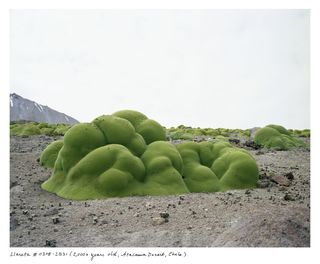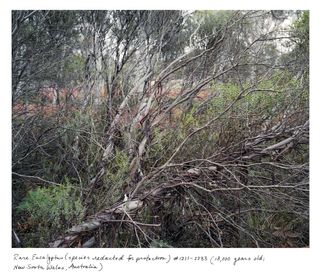Earth's Oldest Living Things Immortalized in Stunning Photos

Photographer Rachel Sussman traveled the planet for a decade in search of organisms that have witnessed thousands of years of history.
Sussman endured leech bites, coral stings, a broken wrist, a solo drive along the Pan-American Highway and a rocky crossing of the Drake Passage. Along the way, she encountered 5,500-year-old Antarctic moss, 80,000-year-old aspen colonies and 100,000-year-old underwater meadows of sea grass.
The stunning images Sussman compiled are featured in her new book, "The Oldest Living Things in the World" (University of Chicago Press), which hits bookstores in the United States this month. [See Images of Earth's Oldest Organisms]

"While finding old tree lists wasn't difficult, there was not an existing list of ancient life across all species that met my criteria," Sussman wrote in her introduction. "I pieced it together, first with some creative searches, and then by drilling down into the work of scientists across many specialties and subspecialties."
Thus, Sussman's collection includes some obscure subjects, such as green blobs of llareta — a dense, alien-looking cousin of parsley that grows high in Chile's Atacama Desert. She also photographed 2,000-year-old brain corals off the coast of Tobago and 13,000-year-old underground forests of dwarf mobola trees with crowns of leaves poking above the surface of South African soil. Her most ancient subject is more than half a million years old: frozen Actinobacteria from a soil sample scooped up in Siberia.
As for her artistic process, Sussman wrote it was important for her to "create an art project that was not simply 'using' science."
"The best art and science projects enhance and extend each other, bringing something new to both; they are not about simply making the research pretty, or making artworks using novel scientific tools," Sussman said.
Sign up for the Live Science daily newsletter now
Get the world’s most fascinating discoveries delivered straight to your inbox.
The book also includes essays by art historian Hans-Ulrich Obrist and science writer Carl Zimmer, who muses on the poppy-seed-size invertebrate called a gastrotrich that reaches old age in a matter of days.
"To squeeze a whole life into a week seems like one of nature's more cruel tricks," Zimmer wrote. "But that's only because we are accustomed to measure out lives in decades. If the ancient animals and plants featured in this book could look upon us, they might feel sorry for us."
Follow Megan Gannon on Twitter and Google+. Follow us @livescience, Facebook & Google+. Original article on Live Science.
